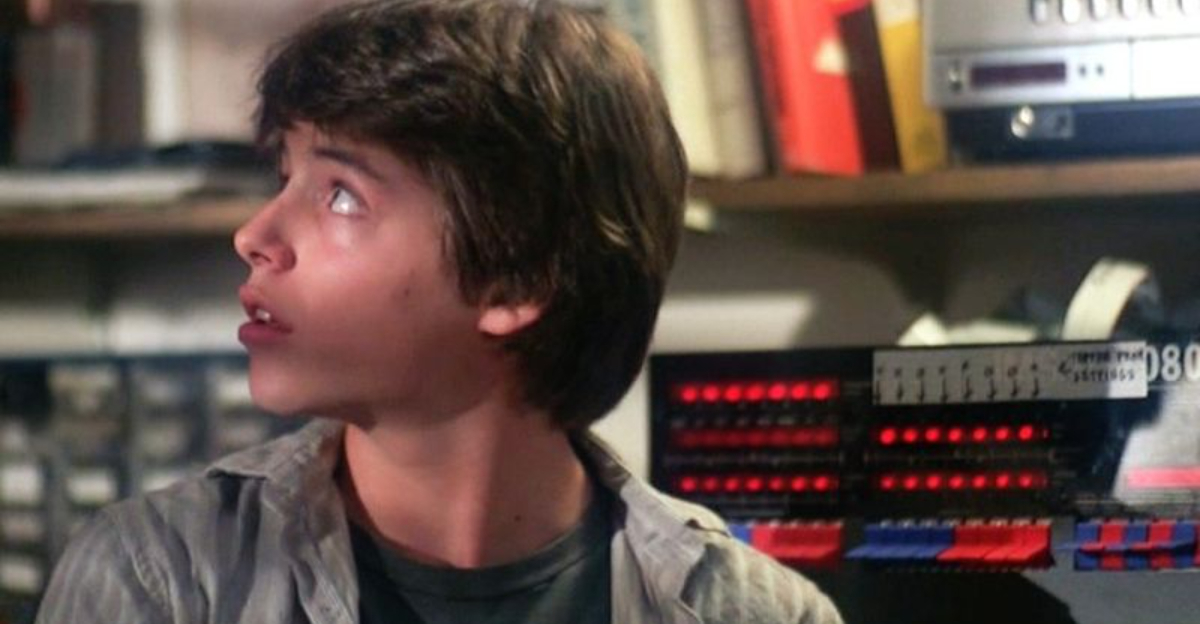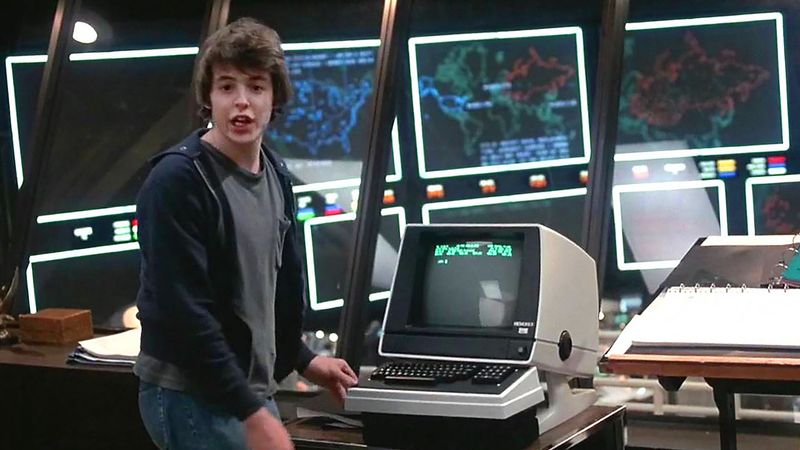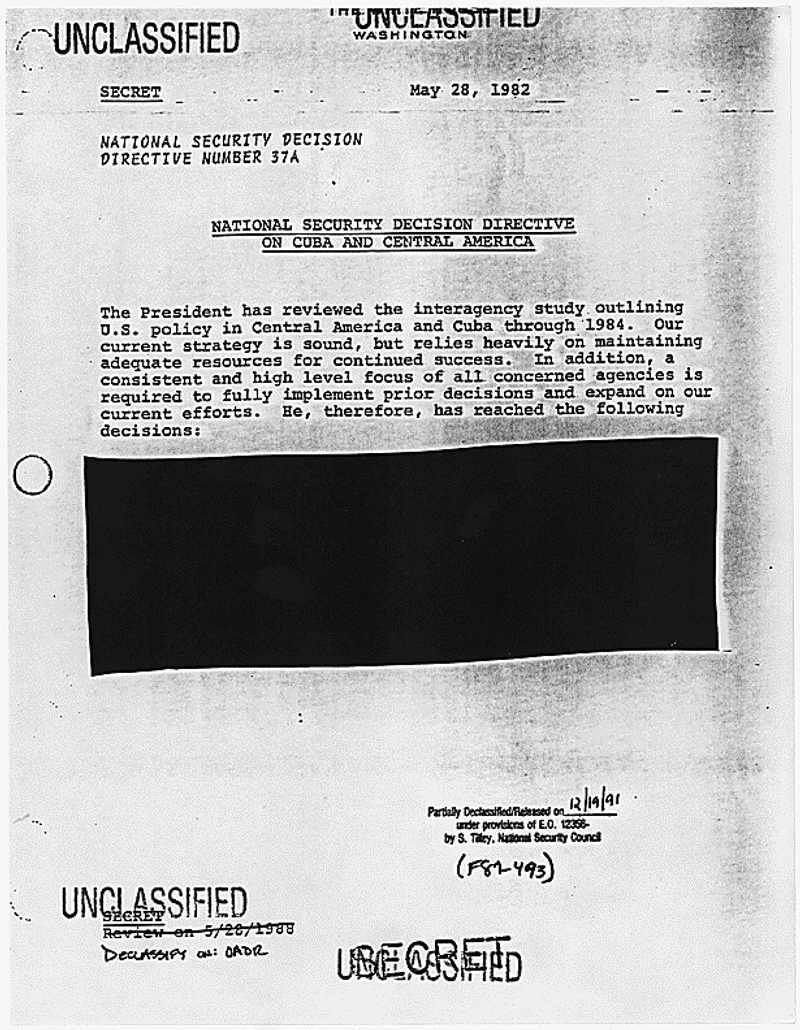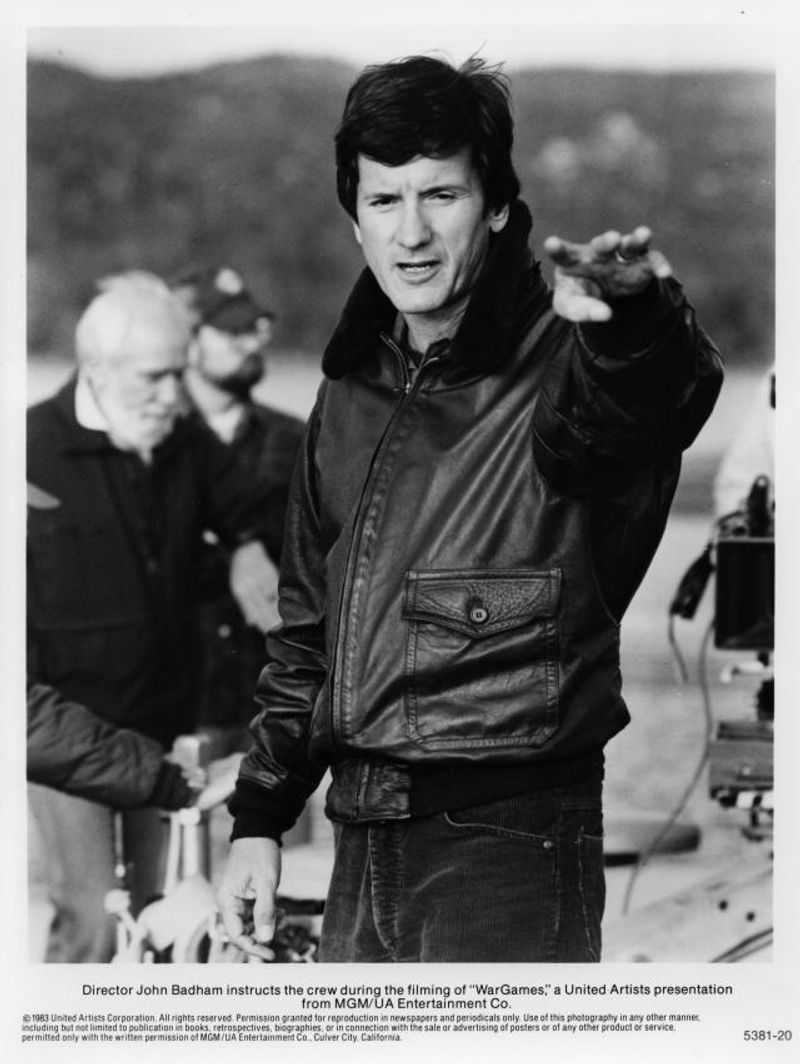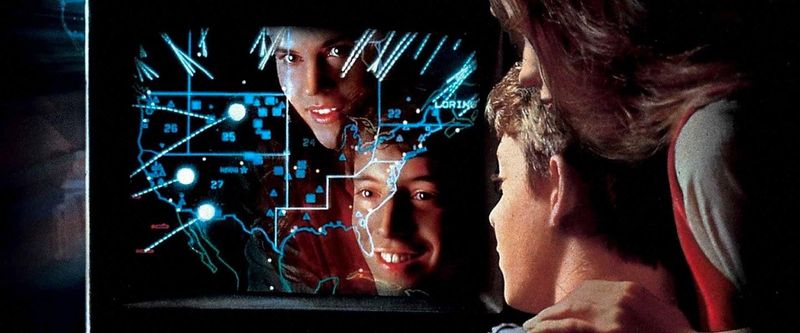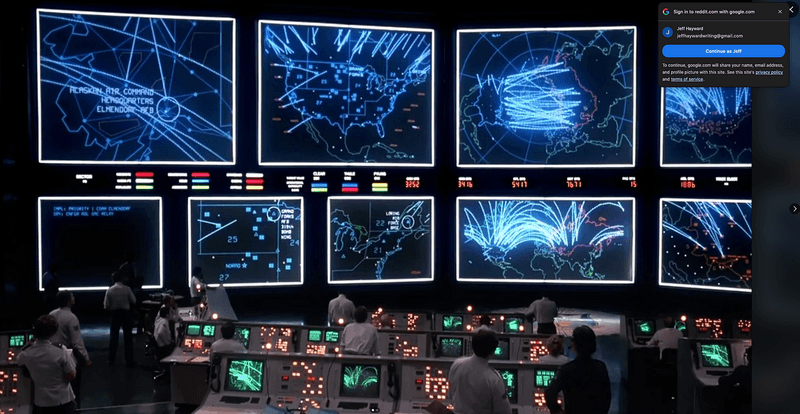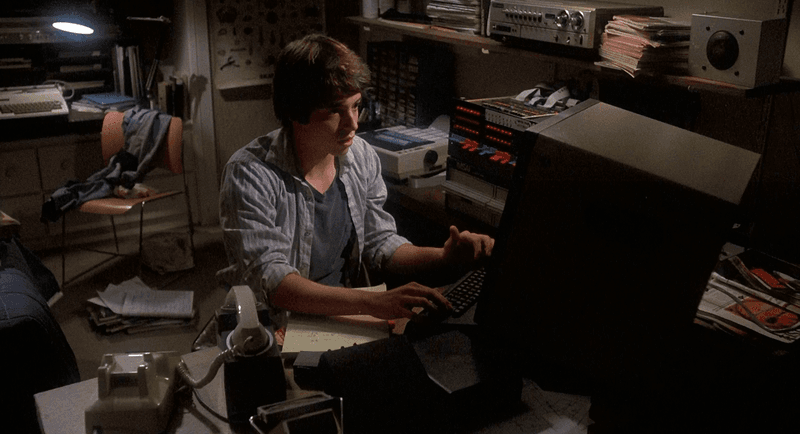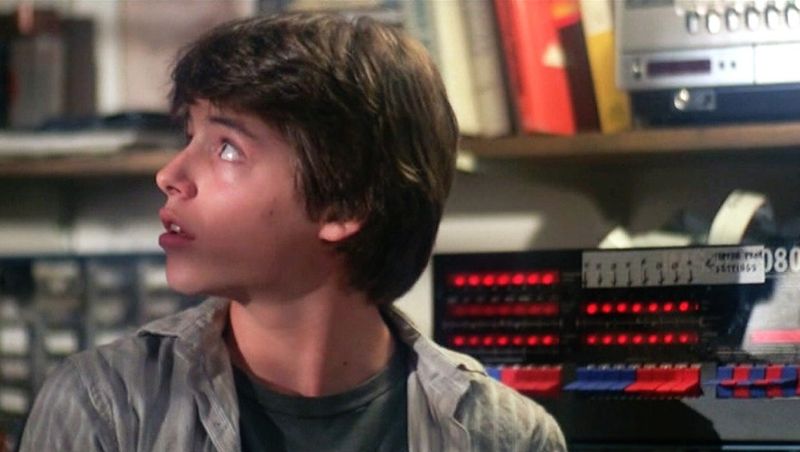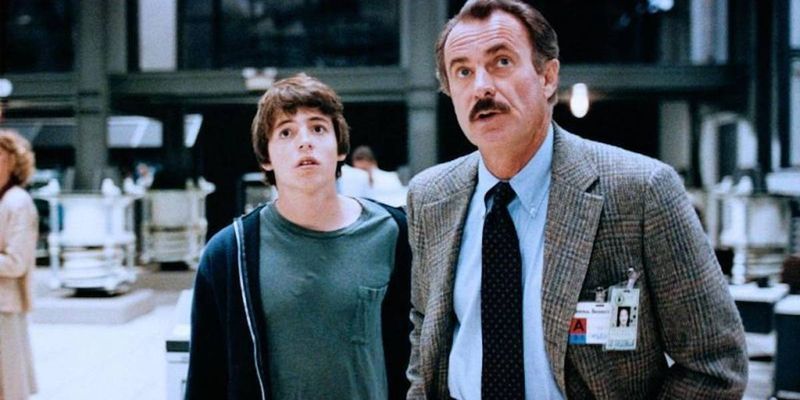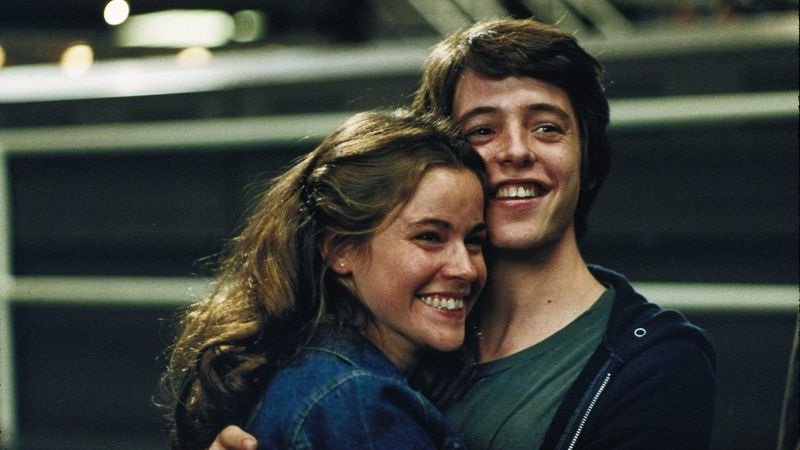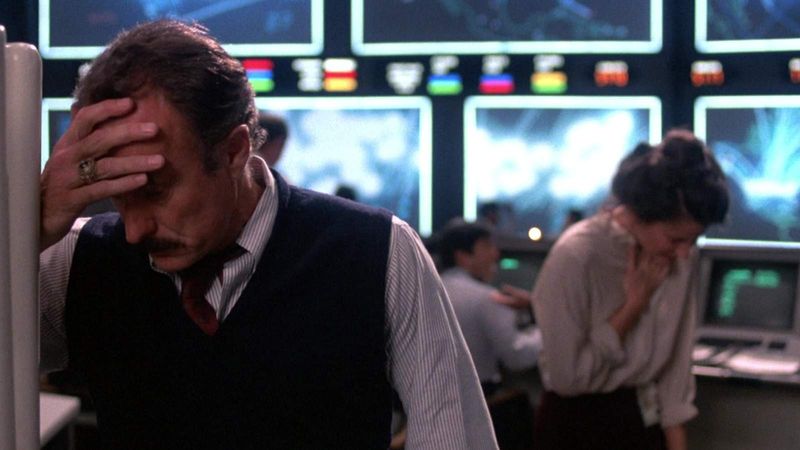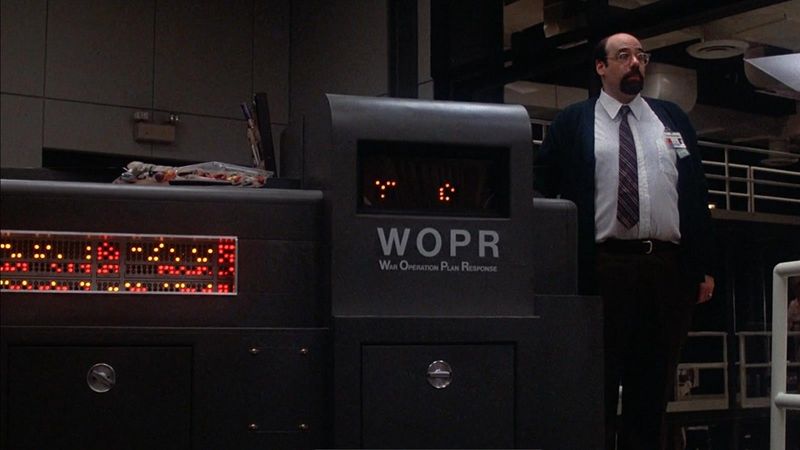The 1983 film, known for its blend of suspense and groundbreaking technology themes, not only captivated audiences but also left a significant mark on the cultural and political landscape. Here are 15 surprising facts that reveal its extensive impact and the intriguing stories behind its production.
1. President Reagan Ordered a National Security Review After Watching It
President Reagan, after a screening of the film, was so struck by its portrayal of cyber warfare that he asked the Joint Chiefs of Staff to investigate the scenario’s plausibility. This unprecedented move led to discussions that emphasized the importance of cybersecurity.
The film’s depiction of a hacker inadvertently accessing a government’s computer system was seen as a potential real-world threat. Reagan’s intervention showcased a rare instance of cinema influencing national security policy, underlining the urgency of addressing the vulnerabilities in digital infrastructures.
2. It Inspired the U.S. Government to Take Hacking Seriously
The film’s influence extended beyond cinema and into the halls of government. It sparked the creation of the 1984 National Security Decision Directive, one of the first governmental documents focusing on computer security.
This initiative marked a pivotal moment in U.S. history, where fictional narratives had a tangible impact on policy-making. The directive aimed to protect national security by addressing vulnerabilities in computer systems, showing how a thriller could catalyze real-world changes.
3. Matthew Broderick Had Never Used a Computer Before Filming
A surprising fact about the film is that Matthew Broderick, who played the tech-savvy lead, had no prior experience with computers. He had to learn from scratch, mastering typing and understanding basic programming concepts.
This immersion into the digital world was crucial for his convincing portrayal of a teenage hacker. Broderick’s dedication to learning underscored the film’s authenticity and brought the character to life, bridging the gap between actor and role in a unique manner.
4. The Movie Coined the Phrase “Shall We Play a Game?”
“Shall We Play a Game?” is more than just a line; it became an iconic piece of 1980s pop culture. Spoken by the film’s intelligent computer system, WOPR, it encapsulated the eerie, yet intriguing relationship between humans and technology.
This phrase resonated with audiences, symbolizing the film’s underlying tension between playfulness and danger. Its impact was so profound that it remains a cultural reference point for discussions about artificial intelligence and gaming.
5. The Original Director Was Replaced Mid-Production
Initially, the film was directed by Martin Brest, known for his work on ‘Beverly Hills Cop.’ However, creative differences led to his replacement by John Badham, who reshaped the film’s tone and direction entirely.
This directorial shift was significant, as Badham’s vision brought a balance of suspense and humor, crucial to the film’s success. The change in leadership midway through production is a testament to the collaborative and sometimes unpredictable nature of filmmaking.
6. A Real Hacker Consulted on the Script
To ensure authenticity, the filmmakers enlisted the expertise of a real hacker during the scriptwriting process. This consultant provided insights into hacking techniques, ensuring that the film’s portrayal of cyber-intrusion was both accurate and engaging.
The inclusion of a technical advisor was unusual for the time, highlighting the filmmakers’ commitment to realism. This collaboration enriched the storyline, making the film’s depiction of hacking credible and ahead of its time.
7. The Movie Predicted AI-Like Technology
The film’s portrayal of the WOPR computer using machine learning principles was visionary. It depicted a system capable of simulating nuclear war strategies, a concept that preceded modern AI technologies.
This foresight into AI’s potential demonstrated the film’s innovative approach to science fiction. WOPR’s capability to learn and adapt provided a thrilling glimpse into the future of artificial intelligence, sparking conversations that continue to resonate in the tech community today.
8. It Was Almost a Different Film Entirely
The film’s script underwent significant changes before its final version. Initially, the story centered on a tragic hacker character, drawing inspiration from the life of David Lightman. However, the focus shifted to the broader theme of global conflict and cyber threats.
These alterations transformed the film into a captivating thriller. The evolution from a personal narrative to an expansive storyline exemplifies the fluidity of storytelling, where creative directions are continuously explored and refined.
9. Ally Sheedy Was Cast in Just Three Days
Ally Sheedy’s casting as Jennifer was a whirlwind process, taking only three days. Fresh from ‘The Breakfast Club,’ Sheedy’s charismatic presence quickly secured her the role.
Her chemistry with Matthew Broderick was evident, adding depth to the on-screen dynamic. This rapid casting decision highlights the fast-paced and intuitive nature of film production, where talent and timing align seamlessly.
10. NORAD Built a Set Better Than the Real Thing
The film’s production team faced a challenge when denied access to film in the real NORAD facility. Undeterred, they created a $1 million replica that insiders claimed was more impressive than the actual command center.
This attention to detail underscored the filmmakers’ dedication to authenticity. The set’s grandeur contributed to the film’s immersive experience, providing a visually compelling backdrop for the high-stakes narrative.
11. It Was a Box Office Hit—Despite Being a Tech Film
Despite its technology-heavy subject, the film achieved box office success, grossing over $79 million. This milestone proved that audiences were eager for stories that combined suspense with cutting-edge themes.
Its triumph at the box office shattered the notion that tech-centric films couldn’t attract large audiences, paving the way for future sci-fi thrillers. The film’s resonance with viewers highlighted the universal appeal of innovative storytelling.
12. The Movie Was Nominated for Three Oscars
The film’s critical acclaim was cemented with three Oscar nominations for Best Screenplay, Best Cinematography, and Best Sound. This recognition underscored the industry’s appreciation for its technical prowess and engaging narrative.
The nominations highlighted the film’s ability to captivate audiences and critics alike, showcasing the potential of tech-centered storytelling in mainstream cinema. This achievement marked a significant moment in the genre’s evolution.
13. It Sparked a Surge in High School Hackers
The film’s release coincided with a noticeable increase in teenage interest in hacking. High schools reported a surge in students experimenting with computer technology, inspired by the protagonist’s adventures.
This cultural phenomenon reflected the film’s impact on youth, igniting curiosity and creativity in the realm of computing. The trend underscored the power of media to influence behavior and interests, particularly among younger audiences.
14. It’s Considered the First “Cyberthriller”
The film is widely credited as the first ‘cyberthriller,’ setting a precedent for the genre. Its blend of suspense, technology, and moral dilemmas laid the groundwork for future films like ‘Hackers’ and ‘The Matrix.’
By establishing the cyberthriller genre, the film expanded the scope of storytelling, integrating technology as a central narrative component. Its success demonstrated the viability of exploring modern themes within the thriller framework.
15. The Real WOPR Was Based on a Military Simulation Project
The fictional WOPR computer was inspired by real military simulation projects designed to strategize nuclear warfare using early AI. This connection to genuine programs added depth to the film’s narrative.
By drawing from actual defense initiatives, the film blurred the lines between fiction and reality. This infusion of real-world elements enriched the storyline, enhancing its authenticity and impact on viewers.
